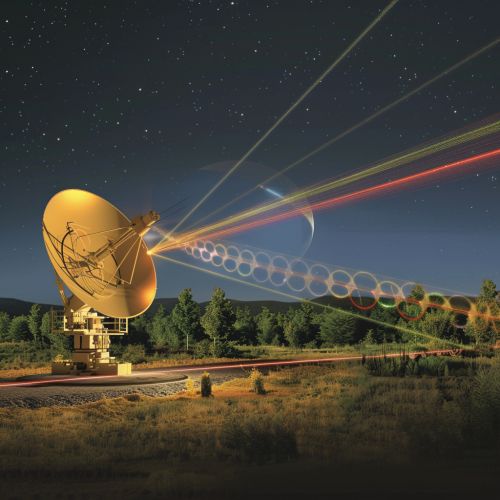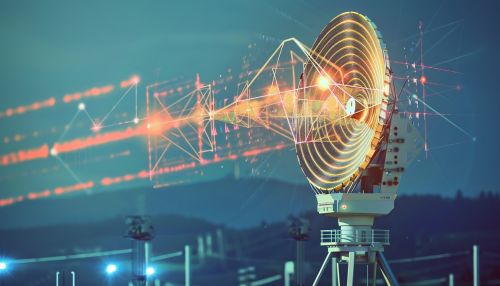Quantum Radar
Introduction
Quantum radar is an advanced type of radar technology that leverages the principles of quantum mechanics to enhance detection capabilities. Unlike classical radar systems, which rely on the reflection of electromagnetic waves to detect objects, quantum radar employs quantum entanglement and other quantum phenomena to achieve higher resolution, better target discrimination, and improved resistance to jamming and stealth technologies. This article delves into the intricate workings, potential applications, and ongoing research in the field of quantum radar.
Principles of Quantum Radar
Quantum radar operates on the foundational principles of quantum mechanics, particularly quantum entanglement and quantum superposition. These principles enable the radar to perform tasks that classical radar systems cannot achieve.
Quantum Entanglement
Quantum entanglement is a phenomenon where two or more particles become interconnected in such a way that the state of one particle instantaneously influences the state of the other, regardless of the distance between them. In quantum radar, entangled photon pairs are used to enhance detection capabilities. When one photon of the pair interacts with an object, the changes in its state are instantaneously reflected in the entangled partner, providing precise information about the object's properties.
Quantum Superposition
Quantum superposition allows particles to exist in multiple states simultaneously. This principle can be harnessed in quantum radar to create superpositions of different signal states, enabling the radar to probe multiple possibilities at once. This leads to improved resolution and the ability to detect objects that might be missed by classical radar systems.
Quantum Illumination
Quantum illumination is a technique that exploits the properties of entangled photons to improve target detection in noisy environments. By using entangled photons, quantum radar can achieve a higher signal-to-noise ratio, making it more effective in detecting objects in cluttered or jamming-prone environments.


Technical Components
Quantum radar systems consist of several critical components that work together to harness quantum phenomena for enhanced detection capabilities.
Entangled Photon Source
The entangled photon source is a crucial component of quantum radar. It generates pairs of entangled photons through processes such as spontaneous parametric down-conversion or four-wave mixing. These entangled photons are then used for target illumination and detection.
Quantum Receiver
The quantum receiver is responsible for detecting the entangled photons that return after interacting with a target. Advanced detectors, such as single-photon avalanche diodes (SPADs) or superconducting nanowire single-photon detectors (SNSPDs), are used to capture the weak signals and extract valuable information.
Signal Processing Unit
The signal processing unit in a quantum radar system analyzes the data collected by the quantum receiver. It employs sophisticated algorithms to interpret the quantum states of the detected photons, enabling precise target identification and characterization.
Applications of Quantum Radar
Quantum radar holds promise for a wide range of applications, from military to civilian uses. Its unique capabilities make it suitable for scenarios where classical radar systems fall short.
Military Applications
In military applications, quantum radar can provide significant advantages in detecting stealth aircraft and other low-observable targets. Its resistance to jamming and ability to operate in cluttered environments make it a valuable asset for defense systems.
Civilian Applications
Quantum radar can also be applied in civilian contexts, such as air traffic control, weather monitoring, and search and rescue operations. Its high resolution and target discrimination capabilities can enhance the safety and efficiency of these activities.
Challenges and Limitations
Despite its potential, quantum radar faces several challenges and limitations that need to be addressed for widespread adoption.
Technical Challenges
One of the primary technical challenges is the generation and detection of entangled photons with high efficiency. Current technologies for producing and detecting entangled photons are still in their infancy, and significant advancements are needed to make quantum radar practical.
Environmental Factors
Quantum radar systems are sensitive to environmental factors such as temperature fluctuations and electromagnetic interference. These factors can affect the entanglement and superposition states of the photons, leading to reduced performance.
Scalability
Scaling quantum radar systems for large-scale applications is another challenge. The complexity of generating and managing entangled photons increases with the size of the system, making it difficult to deploy quantum radar on a wide scale.
Ongoing Research and Development
Research and development in the field of quantum radar are ongoing, with numerous institutions and organizations working to overcome the existing challenges and unlock the full potential of this technology.
Academic Research
Several universities and research institutions are conducting cutting-edge research on quantum radar. These efforts focus on improving the efficiency of entangled photon sources, developing advanced quantum receivers, and creating robust signal processing algorithms.
Government and Military Initiatives
Governments and military organizations are also investing in quantum radar research. These initiatives aim to develop next-generation radar systems that can provide superior detection capabilities and enhance national security.
Industry Involvement
The private sector is increasingly recognizing the potential of quantum radar. Companies specializing in quantum technologies are exploring commercial applications and developing prototypes for various industries.
Future Prospects
The future of quantum radar is promising, with potential breakthroughs on the horizon. As research progresses and technology matures, quantum radar could revolutionize the field of radar detection and open up new possibilities for both military and civilian applications.
Integration with Classical Radar
One potential future development is the integration of quantum radar with classical radar systems. This hybrid approach could combine the strengths of both technologies, providing enhanced detection capabilities and greater versatility.
Quantum Networking
Quantum networking, which involves the interconnection of quantum devices through entangled states, could further enhance the capabilities of quantum radar. By leveraging quantum networks, radar systems could share information and operate collaboratively, improving overall performance.
See Also
- Quantum Computing
- Quantum Cryptography
- Photonics
- Superconducting Detectors
- Spontaneous Parametric Down-Conversion
